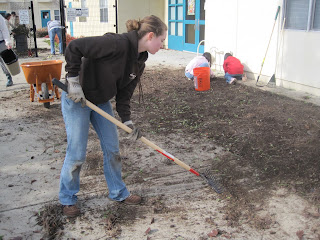This Valentine's Day, show your love for the Earth while showing your love for friends and family: create a Valentine's Day card of recycled or reused materials or make your own to avoid purchasing a wasteful card from the store.

Whenever we purchase something that can otherwise be hand-made, we tell corporations that we support what they're doing and we increase demand for those products, when we otherwise could be decreasing our reliance on the corporate world. It increases the amount of trees cut down to make cards, the amount of plastic used to laminate those cards, quantities of ink used, transportation and fuel usage, and many other things that can be damaging to the environment in such a large-scale operation. Don't you wonder how many cards go unused and unpurchased every year? There are so many cards being produced for Hallmark, Walgreens, Walmart, Target--there's no way they're all used. Most of them are not recyclable.
Nice Hallmark cards can show someone that you care enough to spend money for a card and can seem like a better gesture than making a card yourself. It's become part of our culture to associate spending with appreciation or how much you care, and that's often not the case considering it's much easier to buy a card and sign it than you for you to come up with an idea, create a card, and write your own thoughts.
Sometimes, of course, it may not be appropriate to make a card, especially when it's for a professional or business reason. However, Valentine's Day is a time to show others how much you appreciate, care for, and love them. Creating a card is a great way to show that you care enough to take the time to make something special for them.
Even if you don't use recycled materials, you are at least reducing the demand (however slightly) for more unnecessary cards to be produced. You may be reducing the amount of gasoline burned to get the finished product to your Valentine (if you reuse, especially if it's something like a local paper you're reusing). Plus, decorating a card is a lot more fun than simply signing your name!
Some materials you could use to make your card:
- Newspaper/magazine: Find an article or picture in your used paper or magazine that relates to something your Valentine is interested in and use it as a decorative aspect of your card. Or, create a collage of pictures and words--you could even write your message this way. You would have otherwise just recycled the paper or magazine, so you might as well give it a second life as a Valentine!
- Used tissue paper, wrapping paper, and other gift wrap items, like bows: They've already been used for one purpose, so now use them again--plus, they're colorful!
- Torn, worn, or otherwise unreadable old books: This makes for a unique, interesting, readable Valentine card. If you have a book that's literally falling apart at the bindings, take it apart and find some interesting passages in the book to use as a background for your card. Supplement with construction paper for structure and color.
- Draw a picture: Even if your artistic skills are negligible, drawing a picture says a lot about how much you appreciate someone.
 This website
This website has some more great ideas for recycled Valentine's Day cards, along with design ideas. If you have any suggestions, feel free to post a comment including your idea. At our next meeting (February 12), we will make some recycled Valentine's Day cards, so bring in some materials to do so.
 Our newest club challenge/goal is to eat healthier foods and be aware of what we are putting into our bodies.
Our newest club challenge/goal is to eat healthier foods and be aware of what we are putting into our bodies.
 If you've never been to the Alviso Adobe Community Park, you're missing out on a real nature opportunity! Located on the site of the old Meadowlark Dairy (where the actual dairy itself was located, not the drive-thru) and the restored Alviso Adobe building, this interpretive nature center is run by the City of Pleasanton's naturalist, Eric Nicholas. For more information about the park, visit the website
If you've never been to the Alviso Adobe Community Park, you're missing out on a real nature opportunity! Located on the site of the old Meadowlark Dairy (where the actual dairy itself was located, not the drive-thru) and the restored Alviso Adobe building, this interpretive nature center is run by the City of Pleasanton's naturalist, Eric Nicholas. For more information about the park, visit the website  While many of the opportunities at the park cost money, there's one that certainly doesn't: volunteering! There's always opportunities to garden or help Eric with something for a class, etc. For example:
While many of the opportunities at the park cost money, there's one that certainly doesn't: volunteering! There's always opportunities to garden or help Eric with something for a class, etc. For example: I was thinking it would be a great club project to plan a Saturday to go up there and volunteer in the garden. I will arrange with Eric when that would be best. Please email me if you're interested in attending so I can let him know how many people to plan for. Also let me know which Saturdays in the coming weeks you would not be able to attend. We would be volunteering from 10-11 A.M.
I was thinking it would be a great club project to plan a Saturday to go up there and volunteer in the garden. I will arrange with Eric when that would be best. Please email me if you're interested in attending so I can let him know how many people to plan for. Also let me know which Saturdays in the coming weeks you would not be able to attend. We would be volunteering from 10-11 A.M.

















